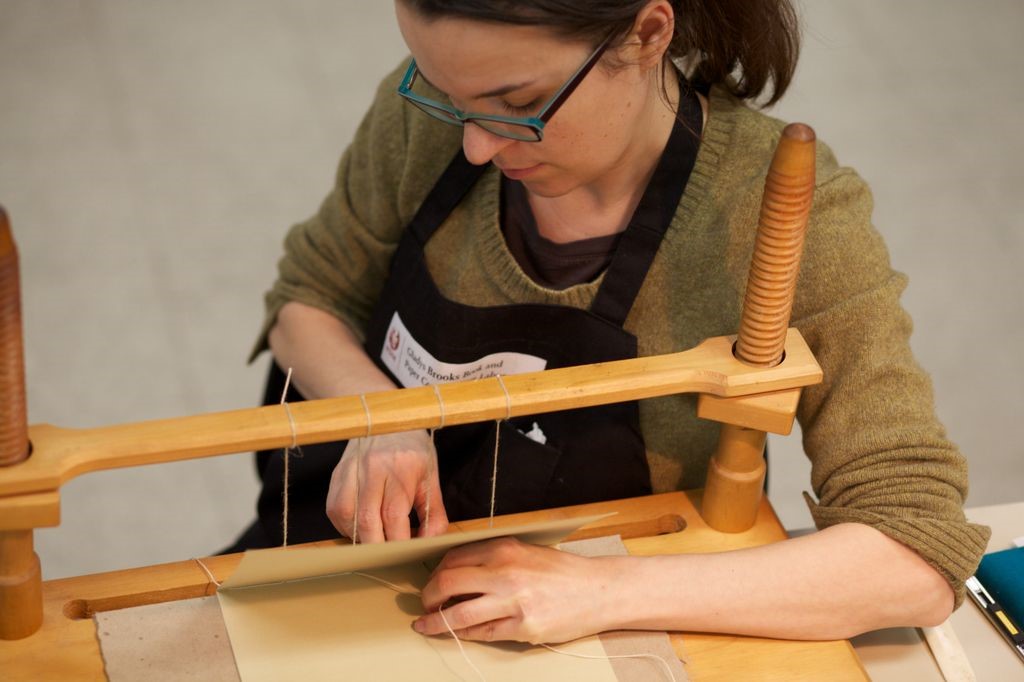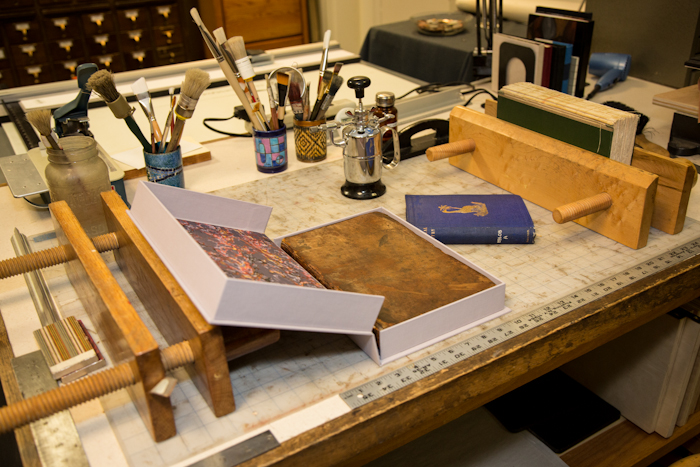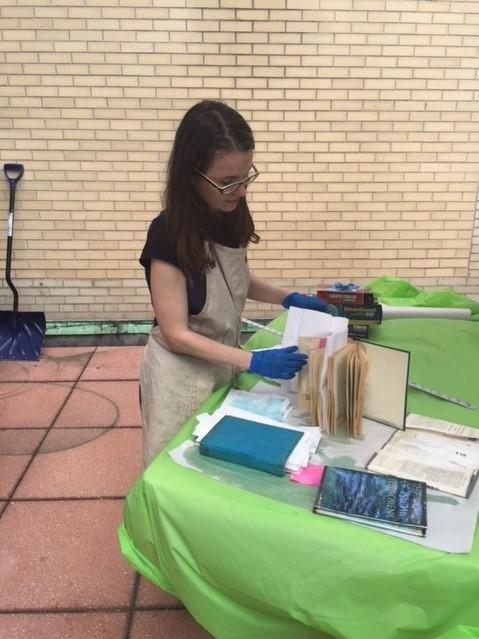Labor of Love
Earlier this year, Library member Ayun Halliday interviewed me for her column Labor of Love, published by the English Language newspaper Mainichi Weekly in Tokyo. I get a lot of questions about working as a Book Conservator. Maybe you've been wondering about it too? Below is an excerpt from the article. 
How did you become interested in book conservation?
I graduated from college with a degree in studio art, and like many people, I found it difficult to translate that into making a living. I liked the idea of working with my hands, and liked that book conservation also had an intellectual component. You have to have hand skills, at least a basic knowledge of chemistry, and know quite a bit about the history of the book. It also helps to be good at project management, photography, databases…the list goes on.
What was the training like?
I received a diploma in bookbinding from the North Bennet Street School in Boston, MA. They’re kind of like an old-world craft school. They also have programs in violin making, furniture making, and preservation carpentry, for example. I spent years learning how to make books before I attempted to repair one. I then spent several years interning at Conservation labs, and have been very lucky to work with some of the best Conservators out there.
What is a typical day like for you?
I guess I’m lucky in that it varies a lot from day to day, according to the project I’m working on.
What are some of the trickiest fixes?
I would say the trickiest fix by far is trying to undue someone else’s “fix.” Sometimes people have the best intensions, and don’t realize how much knowledge and skill is needed for what seems like a simple repair. The profession has also changed a lot over the years, and Conservators are now more concerned with repairs being minimally invasive, and “reversible.” Trying to remove modern glues from old, fragile paper can be a particularly painful process.
What do you do with books that are deemed beyond repair?
Short answer, it depends on the book. Sometimes it will be digitized, so that people can at least access the information. We generally keep the original book around, unlike in the early days of microfiche. If a book can’t be replaced, but has value, it will often be placed in a custom made box, and access to it will be restricted.
When you see others (mis)handling their books is there something in particular that makes you cringe?
White cotton gloves. There’s a huge misconception that wearing them is necessary to protect old and rare books. The opposite is true—they make it difficult to handle pages, and so you are more likely to do damage if you wear them. Also, they track dirt around. They drive me crazy.
What is the best part of your work?
So many jobs today are pretty abstract. I enjoy having something physical to show for my work at the end of the day. A stack of neatly repaired books that used to be unreadable is pretty satisfying.
What is the most challenging part of your work?
The most challenging part of my work is balancing the amount that needs to be done with the amount of time it takes to do it. There are so, so many books that are in bad shape, and deserve attention. But fixing things the right way takes a lot of time. Work needs to be prioritized pretty rigorously. I wish I could fix everything, but there just isn’t enough time in the day.



Disqus Comments